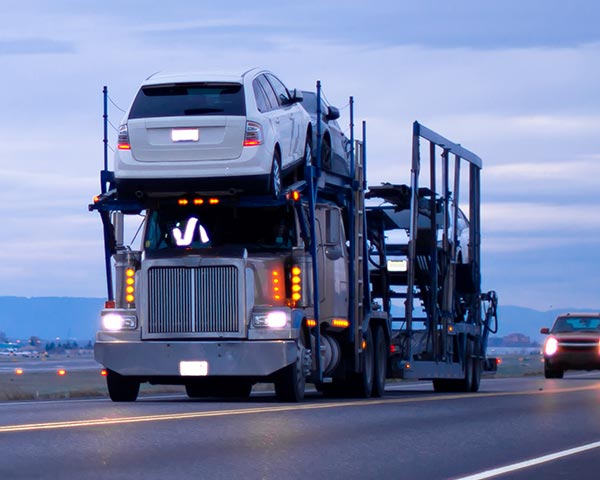Introduction (150–200 words)
Shipping a vehicle can be a stressful experience, especially if it’s your first time. Whether you’re moving across the country, buying a car online, or relocating for work, proper preparation ensures that your vehicle arrives safely and without any complications.
At Auto Route Express, we’ve helped thousands of customers transport their vehicles nationwide, and we know that preparation is key. By following a few simple steps, you can protect your car, prevent delays, and make the shipping process smooth and hassle-free. In this guide, we’ll cover the essential tips for preparing your vehicle for transport, from cleaning and documentation to mechanical checks and safety precautions.
1. Clean Your Vehicle Thoroughly
Before shipping, it’s essential to clean your car inside and out. A clean vehicle allows you to clearly document its condition before transport, helping prevent disputes or claims if any damage occurs during the journey.
-
Exterior Cleaning: Wash and wax your car to remove dirt, salt, and debris. This not only makes the car easier to inspect but also protects the paint during transit.
-
Interior Cleaning: Remove all trash, personal items, and unnecessary clutter from the cabin and trunk. Most auto transport companies are not responsible for personal belongings left in the car, and excess weight can affect loading and safety.
-
Special Considerations: For luxury or classic cars, consider additional protective measures such as seat covers or dashboard protection.
2. Remove Personal Items and Accessories
Auto transport companies focus solely on transporting vehicles, and their insurance typically covers the car itself—not items inside it. Removing personal items is important for both safety and insurance purposes.
-
Why Remove Items: Loose items can shift during transport and cause damage to your car’s interior or other vehicles on the trailer.
-
Accessories to Remove: Roof racks, spoilers, bike racks, and external antennas should be removed or secured. Loose items can obstruct loading or cause damage.
-
Valuables: Never leave money, electronics, or other valuables in the vehicle during shipping.
By taking these precautions, you reduce risk and ensure your vehicle is ready for transport.
3. Check for Mechanical Issues and Leaks
Before shipping, ensure your vehicle is in good working order. Transporting a car with mechanical issues is possible, but it may require special arrangements or additional fees.
-
Fluid Leaks: Check for oil, coolant, or other fluid leaks. Carriers may refuse to transport vehicles that could leak on the trailer.
-
Battery and Electrical Systems: Ensure your battery is charged and electrical systems are functioning. A dead battery could cause problems during loading or unloading.
-
Tires and Brakes: Inspect tires for proper inflation and brakes for functionality. Flat or damaged tires may need to be repaired or replaced before transport.
If your car has any mechanical problems, inform the transport company in advance so they can accommodate special requirements.
4. Document the Condition of Your Vehicle
Documenting your vehicle’s condition is one of the most important steps before shipping. Clear photos and notes will protect you in case of any damage during transit.
-
Photographs: Take pictures from multiple angles—front, back, sides, and close-ups of existing scratches, dents, or paint chips.
-
Detailed Notes: Write down any issues, imperfections, or modifications to your vehicle. This can be used for insurance claims if needed.
-
Inspection Report: Most auto transport companies provide a pre-shipping inspection form. Review it carefully and ensure it accurately reflects your vehicle’s condition.
Proper documentation ensures a smooth claims process and protects your investment.
5. Reduce Fuel and Secure Your Vehicle
To comply with safety regulations and make loading easier, your vehicle should be prepared for transport.
-
Fuel Level: Keep your fuel tank at approximately 1/4 full. Too much fuel adds unnecessary weight, while an empty tank could cause problems if your car needs to be moved.
-
Parking Brake and Accessories: Release the parking brake if instructed by the carrier, and ensure keys or key fobs are easily accessible.
-
Antennas and Mirrors: Fold in side mirrors and remove or secure antennas to prevent damage.
These steps make loading safer and reduce the risk of damage during transport.
6. Plan for Pickup and Delivery
Preparation isn’t just about the car—it’s also about logistics.
-
Schedule in Advance: Book your transport early, especially during peak moving seasons like summer or the end-of-year holidays.
-
Confirm Addresses: Ensure both pickup and delivery addresses are accurate and accessible for the carrier.
-
Be Available for Communication: Keep your phone handy during pickup and delivery to coordinate any last-minute details.
Proper planning ensures your car arrives on time and without unnecessary delays.
7. Additional Tips and Common Mistakes to Avoid
-
Avoid Shipping Full of Personal Items: Many people try to save time by leaving items in the car. This is risky and often against carrier policies.
-
Check for Recalls or Pending Repairs: Resolve outstanding issues before transport.
-
Verify Insurance Coverage: Confirm that your transport company has adequate insurance for your vehicle.
By following these tips, you’ll avoid common mistakes and ensure a stress-free experience.
Conclusion
Shipping a car doesn’t have to be stressful. With the right preparation—cleaning, documenting, checking mechanical systems, and planning for pickup—you can ensure your vehicle arrives safely and on time.
At Auto Route Express, we guide our customers through every step of the process, offering door-to-door service, real-time updates, and professional handling for every type of vehicle. Whether you’re shipping a standard car, luxury vehicle, or classic automobile, proper preparation is the key to a smooth transport experience.
Call-to-Action:
Ready to ship your vehicle safely and hassle-free? Get a free quote from Auto Route Express today!

